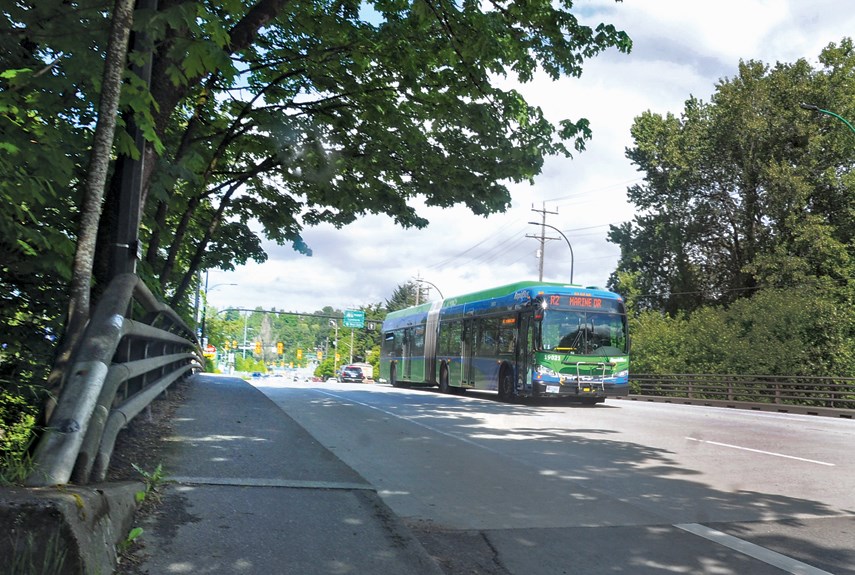Just as one major bridge construction project is coming to an end in the City of North Vancouver, a new one is on the horizon.
The city is seeking bids for a contract to study a potential widening or replacement of the existing bridge where Cotton Road crosses Lynn Creek.
“[The bridge] is currently a pinch point for transit and active transportation modes. The city is looking to widen the crossing, in the future, to accommodate separated cycling lanes, wider sidewalks, and transit priority lanes,” the request for proposal states.
When the city last commissioned an assessment report for the 49-year-old bridge in 2015, it concluded that some restorative work would be needed within the next decade or so, said Karyn Magnusson, the city’s deputy director of engineering, parks and environment. The consultant will be expected to produce an updated assessment and some concept designs for how an expansion might look.
“It would really be an extension of a lot of the improvements that were done for the R2 (RapidBus) line. It ensures that transit is getting priority whenever there's road congestion,” Magnusson said. “The R2 has the potential to move an incredible amount of people on that route, and we really want to ensure that those people are having a reliable and speedy transit service.”
There is no timeline for when the work would be done, but with a budget likely in the $10-million-plus range, it would be subject to funding from senior levels of government, which the city would be ready to pounce on with a new study in hand.
When it comes time for construction, Magnusson said it would likely be built in halves, similar to the Mosquito Creek Bridge replacement project, or traffic may be detoured via a new temporary span, in order to keep the arterial flowing.
“It obviously has impacts, but you can't simply eliminate a key part of the (major road network) without at least making some capacity for through movement,” she said. “Certainly traffic management would be a key aspect of any construction approach that we would take for this bridge.”
On the average day, 30,500 vehicles cross the bridge, with 2,300 vehicles per hour between 4 and 5 p.m., according to the city. Although volume dipped at the beginning of the pandemic, traffic is pretty much back to typical now, Magnusson said, and the corridor regularly becomes congested, especially if there’s a snafu on the Ironworkers Memorial Second Narrows Crossing.
The Ministry of Transportation and Infrastructure’s Lower Lynn Improvement Project on Highway 1 is on schedule to be mostly online by this fall, which should draw some commuters off Third/Main Street, Magnusson added.
TransLink could not provide any data how an expansion would make the R2 run smoother, but the study should also address travel time benefits.
“A dedicated transit lane on the Lynn Creek Bridge would fill a critical gap in the North Shore’s bus priority network for the R2 RapidBus. We are excited and supportive of this step towards improving bus service on the corridor,” said Dan Mountain, TransLink spokesman.
The Mosquito Creek Bridge project, meanwhile, which has been in progress for 16 months, is now in its final weeks.
Magnusson said the final paving, sidewalk work and signal timing should be done by the end of June.
“I think a lot of people will appreciate having the nuisance of construction over,” Magnusson said. “We just really appreciate everybody's co-operation and patience. We know it's been a long road and we're really looking forward to it being done.”
All that will be left to be done is the new trail and riparian restoration work underneath the bridge. That work will happen this fall when fish spawning has ended for the season and federal fisheries regulations allow for work near creeks.



